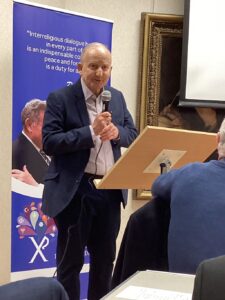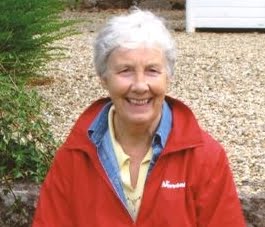European Bishops Interreligious Dialogue Conference
The headquarters of the Bishops Conference of France in Paris was the venue for the European Bishops Interreligious Dialogue Conference from 13th to 15th September 2023.
This section of the CCEE is headed by Bishop Brendan Leahy and the conference brought together representatives from all over Europe to focus mainly on relationships between Catholicism and Islam. Time was also given to reflecting on relationships with Buddhism and Hinduism.
 Conference listened to presentations and testimonies from academics, theologians and to hear first-hand from representatives of the Muslim and Buddhist communities in France about their experiences of interfaith dialogue and the challenge of building positive relationships between faith communities. Delegates also discussed their own local contexts and discussed potential topics for future conference meetings.
Conference listened to presentations and testimonies from academics, theologians and to hear first-hand from representatives of the Muslim and Buddhist communities in France about their experiences of interfaith dialogue and the challenge of building positive relationships between faith communities. Delegates also discussed their own local contexts and discussed potential topics for future conference meetings.
In his welcoming address to the conference Bishop Leahy quoted Pope Francis’ encyclical Fratelli Tutti:
“If we want to encounter and help one another, we have to dialogue. There is no need for me to stress the benefits of dialogue. I have only to think of what our world would be like without the patient dialogue of the many generous persons who keep families and communities together.”
The importance of this dialogue was picked up in the opening presentation by Fr. Laurent Basanese of the Dicastery for Interreligious Dialogue whose address to the conference mentioned dialogue no fewer that 35 times. He also highlighted the need for faith leaders to lead by example, quoting an Anglican Bishop who said at a recent interreligious meeting for peace in the Balkans:
“If religious leaders don’t ‘walk’ together out of friendship, how can we expect our faithful to do so?”
This emphasis on dialogue and walking together set the tone for the conference and was picked up by Archbishop Turini, President of the French Bishops’ Conference. He noted that the objective of interfaith dialogue was to enrich each other and in doing so deepen our own faith. However, the conference recognised that interfaith dialogue is not without its complexities and difficulties.
What was clear was that the experience of Christian – Muslim interaction varies enormously for both communities depending on the history of their encounter which has in some places been much more challenging than in others. There is a balance to be struck between the need for constructive dialogue and the Church’s mission to proclaim the gospel. The first day concluded with evening prayer and Mass in the chapel within the Bishops’ Conference complex.
On day two of the conference Professor Juliette Galonnier gave a detailed presentation from a sociological perspective on the experience of young Muslims in France. The professor highlighted the fact that the use of the word Muslim can be problematic in itself. She noted that the “Muslim” label covers a diverse reality made up of distinct pathways of religious experiences. Looking at it that way, it is most productive to understand Muslims as a community of debate about Islam, rather than seeing them as a homogeneous community holding similar ideas and practices. Consequently, we need to be careful not to generalise when talking about Muslims or Islam but to recognise the individual nature of each encounter.
Later, Dr Michele Brignone of the Oasis Foundation, an organisation based in Milan that studies the interaction and fosters mutual understanding between Christians and Muslims within the global context, gave a detailed account of the wide variety of ways in which social media is being used to communicate Muslim teaching. One of the complexities that the widespread use of social media creates is the question of authority. Which social media teaching is the right one given that there many and diverse answers to important questions. He concluded that social media is transforming the religious experience of Islam giving rise to new characters and influencers.
Day two continued with a meeting with Rector Chems-eddine Mohamed Hafiz, President of the Great Mosque in Paris. In his talk he highlighted the opportunities that good interfaith dialogue presents to Christians and Muslims especially when it comes to engaging together in acts of charity. However, he did not shy away from some of the challenges that try to separate and break the links that bind the Abrahamic faiths together. He echoed earlier comments of the conference stressing the need to work publicly together to face up to these challenges. He highlighted issues of Islamic extremism and also issues of discrimination against Muslims.
The day’s discussions concluded with small group meetings for the delegates in which potential lines of work for the next conference as well as the opportunity to report on experiences of Islamic-Christian dialogue from within our own national contexts.
 The day concluded with a short walk to the Chapel of Our Lady of the Miraculous Medal for Evening Prayer.
The day concluded with a short walk to the Chapel of Our Lady of the Miraculous Medal for Evening Prayer.
The last day of the conference began with a brief report from Bishop Leahy on a seminar that had taken place in the Dicastery for Interreligious Dialogue between Catholics and Hindus. However, the bulk of the morning was given over to Professor Dennis Gira, a specialist in Buddhism and the testimony of Lama Jigme Gyatso, Co-President of the French Buddhist union. Just as the diversity of Islam had been highlighted in earlier sessions it was made clear that breadth of the Buddhist experience is something that needs to be taken into consideration as part of any dialogue. It very much depends on where we are, what branch of Buddhism we will encounter. But again, the focus was on the need for dialogue. Dialogue that is based on cooperation and action, religious experience as well as dialogue between academics and theologians.
The final contribution from Lama Gyatso gave an insight into his own personal religious journey to Buddhism before he went on to reflect on the experience of Buddhist in France and the challenges they face being properly accepted and engaged by the authorities in vital areas including prison and hospital chaplaincy.
 As is often the case with conferences, the networking that took place outside the main hall over lunch and coffee was just as enlightening. In my conversations with delegates from Sweden, Germany, Austria, Malta, Lebanon, France, Italy and Croatia, I learned huge amounts about the diversity of experience and engagement in interreligious dialogue across Europe.
As is often the case with conferences, the networking that took place outside the main hall over lunch and coffee was just as enlightening. In my conversations with delegates from Sweden, Germany, Austria, Malta, Lebanon, France, Italy and Croatia, I learned huge amounts about the diversity of experience and engagement in interreligious dialogue across Europe.
European Bishops Interreligious Dialogue Conference Read More »






















 We began by reflecting on a series of illustrations of statues found in many medieval cathedrals around Europe, sometimes carved standing side by side, sometimes standing on either side of the entrance They depict
We began by reflecting on a series of illustrations of statues found in many medieval cathedrals around Europe, sometimes carved standing side by side, sometimes standing on either side of the entrance They depict